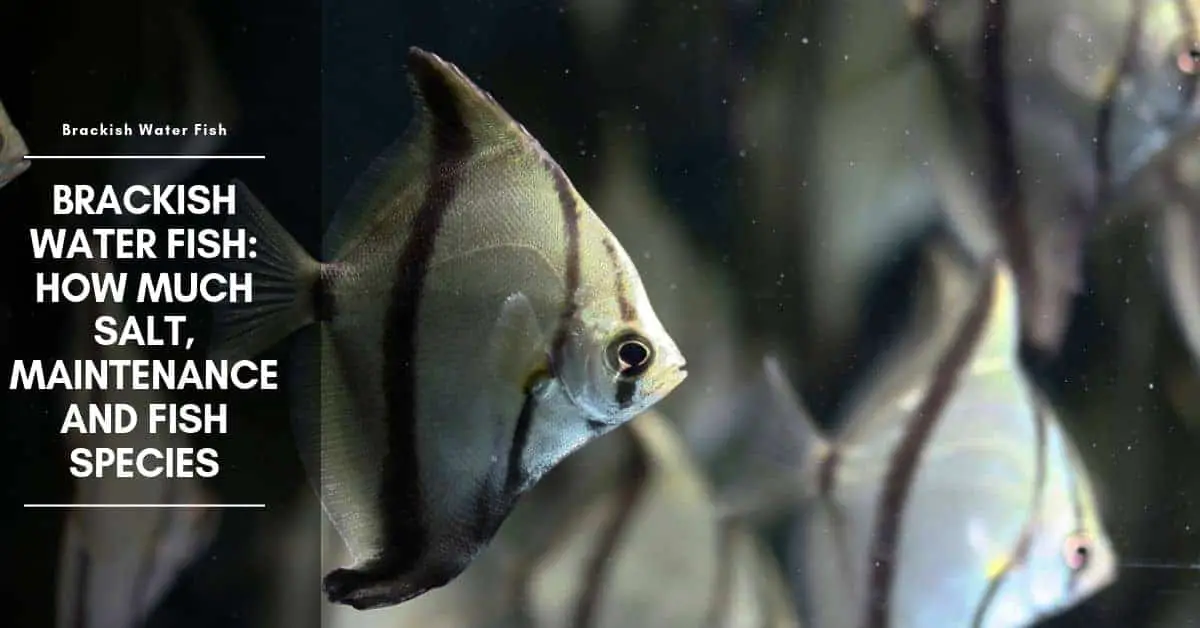The conditions encountered by brackish fish species living in estuaries and mangroves, where freshwater and saltwater meet, can be recreated in a brackish water aquarium. The equipment required is much the same as for freshwater aquariums, but the substrate is usually sandy, so power filters are more appropriate than undergravel systems.
How Much Salt You Should Add For Brackish Water Aquarium?
The water in a brackish aquarium requires a salinity level, expressed in terms of specific gravity (SG), of 1.002–1.007 (marine aquariums have a salinity of at least SG 1.020). To achieve this, dissolve the appropriate amount (about 1 cup per 5 gallons) of marine salt in dechlorinated tap water, before filling the tank.
Aquarium Maintenance
The movement of water within the brackish tank caused by the filter and heater will ensure an even concentration throughout the aquarium. Salinity increases as water evaporate from the tank, so when topping off to replace lost water, use dechlorinated tap water rather than saltwater to keep the salinity within the desired range.
For significant partial water changes carried out during routine maintenance, use salinated water. It is important that the tank used for a brackish water aquarium is either all-glass or acrylic, with no metal surround. This is because saltwater rapidly corrodes metal, and any corrosion in the tank pollutes the water and can harm the fish.
Brackish Water Fish Species
A brackish-water tank lets you keep a number of interesting, but often overlooked, species that are native to estuarine waters. The home aquarium can be a mixed community setup, or recreation of specialized habitats, such as a swamp.
API STRESS ZYME Freshwater and Saltwater Aquarium Cleaning Solution 16-Ounce Bottle
API ACCU-CLEAR Freshwater Aquarium Water Clarifier 4-Ounce Bottle
30% OffTetra Water Clarifier, Aquarium Treatment Solution, 8.45 oz, Clears Cloudy Aquarium Water, Safe to Use with Fish and Plants, For Fresh Water
$8.49 (as of June 28, 2025 06:09 GMT +03:00 - More infoProduct prices and availability are accurate as of the date/time indicated and are subject to change. Any price and availability information displayed on [relevant Amazon Site(s), as applicable] at the time of purchase will apply to the purchase of this product.)It could incorporate mangrove plants and mudskippers, which venture out of the water more regularly than any other fish. Brackish water tanks are not difficult to maintain; correct water conditions are initially achieved by adding a small amount of sea salt. Some of the more adaptable aquarium plants will grow in these surroundings, although plastic substitutes can also be used.
Mono Fish
- ORIGINS Range extends from East Africa eastward as far as parts of Indonesia and Australia.
- SIZE 10 in (25 cm).
- DIET Live-foods and vegetable matter.
- WATER Temperature 72–77°F (22–25°C); alkaline (pH 7.6–8.0) with SG 1.002–1.007.
- TEMPERAMENT Peaceful, but avoid small companions.
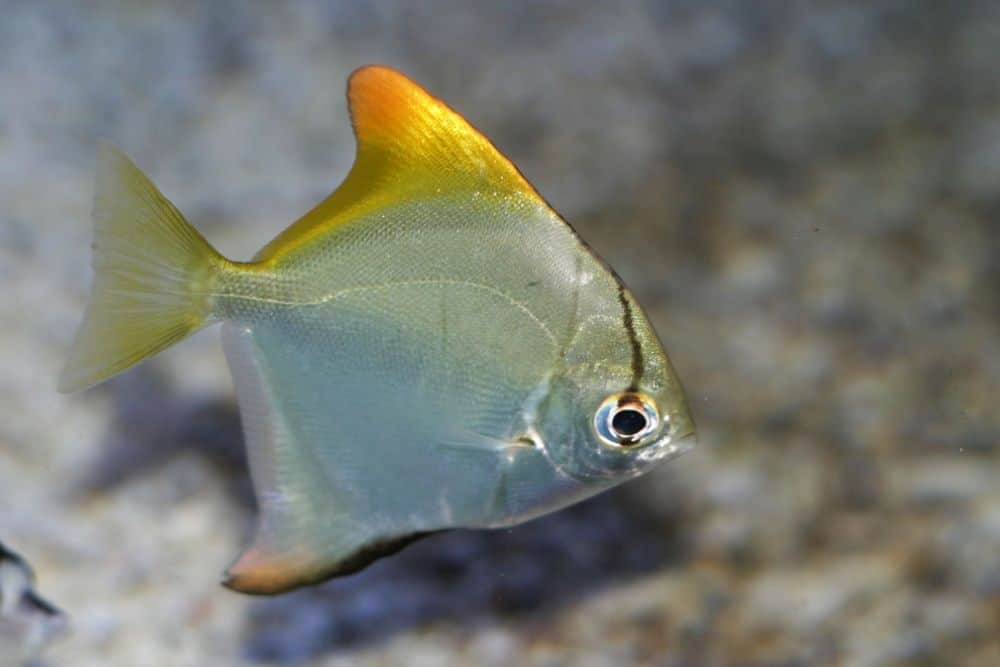
Although largely silver, the Mono’s patterning does differ to some extent between individuals. The prominence of the black banding through the eye and behind the gills is variable, as is the amount of yellow coloration on the fins. Monos look most effective if kept in a group. They are elegant but rather nervous fish species by nature.
Siamese Tigerfish
- ORIGINS Southeast Asia, in parts of Cambodia (Kampuchea), Thailand, and on Sumatra and Borneo.
- SIZE 16 in (40 cm).
- DIET Live-foods of various types.
- WATER Temperature 72–79°F (22–26°C); alkaline (pH 7.6–8.0) with SG 1.002–1.007.
- TEMPERAMENT Predatory.
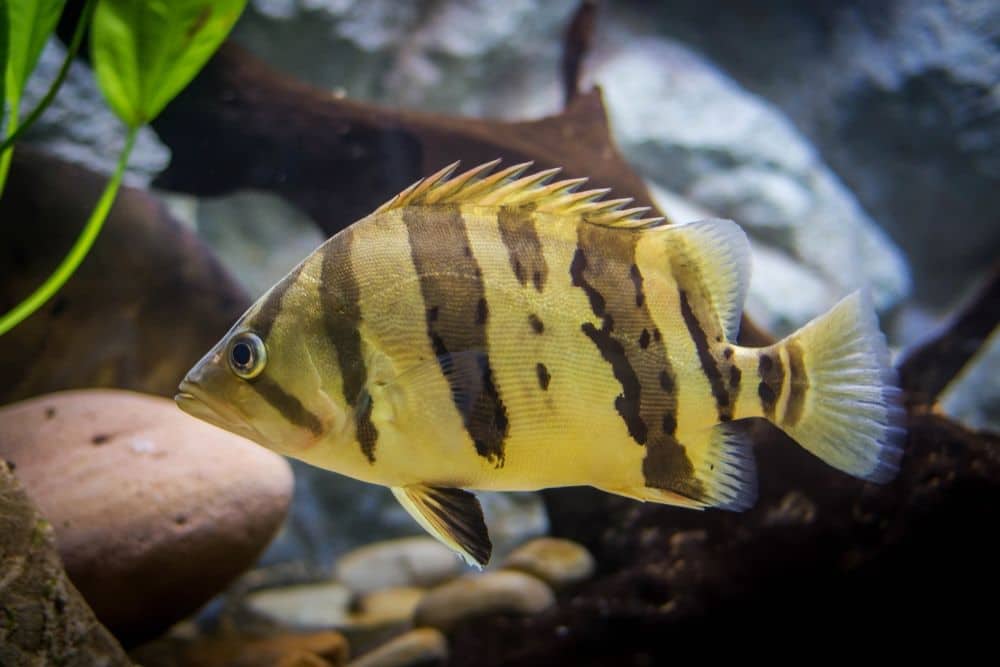
The vertical yellow and black stripes of these fish help to explain their name. Their dorsal fin has a decidedly spiky appearance. Although Siamese Tigerfish are unlikely to grow as big in aquariums as they do in the wild, juveniles will still ultimately need a large brackish tank. Siamese Tigers cannot be trusted with smaller companions since other fish naturally form part of their diet.
Glass Fish
- ORIGINS Asia, found throughout India, Myanmar (Burma), and Thailand.
- SIZE 3 in (8 cm).
- DIET Live foods of various types.
- WATER Temperature 77–79°F (25–26°C); alkaline (pH 7.6–8.0) with SG 1.002–1.007.
- TEMPERAMENT Instinctively rather nervous
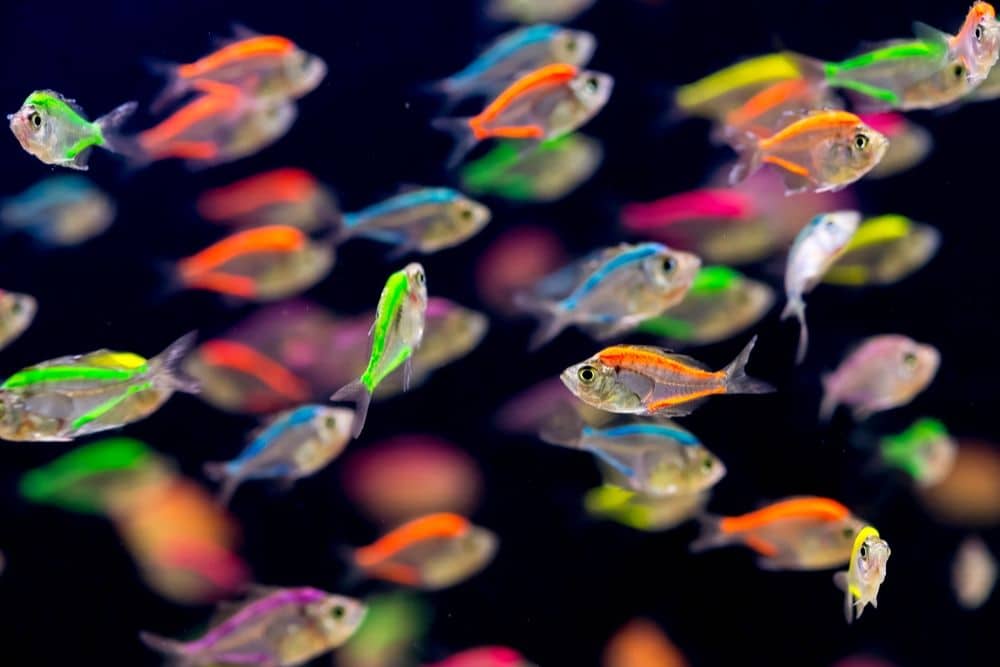
The internal organs of Glass Fish are visible through their skin. Males have a more pointed swim bladder and bluer edges on their fins. Spawning can be induced by raising the water temperature. Up to 150 eggs are scattered among plants. They hatch in a day, and the fry are free-swimming soon after. These fish are sometimes injected with bright dyes and sold as “painted glass fish”; even if they survive, their garish colors will fade after a few months.
Spiny Eel
- ORIGINS Southeast Asia, in brackish environments close to the shoreline.
- SIZE 14 in (35 cm).
- DIET Livefoods of different types.
- WATER Temperature 73–82°F (23–28°C); alkaline (pH 7.6–8.0) with SG 1.002–1.007.
- TEMPERAMENT Predatory and aggressive.
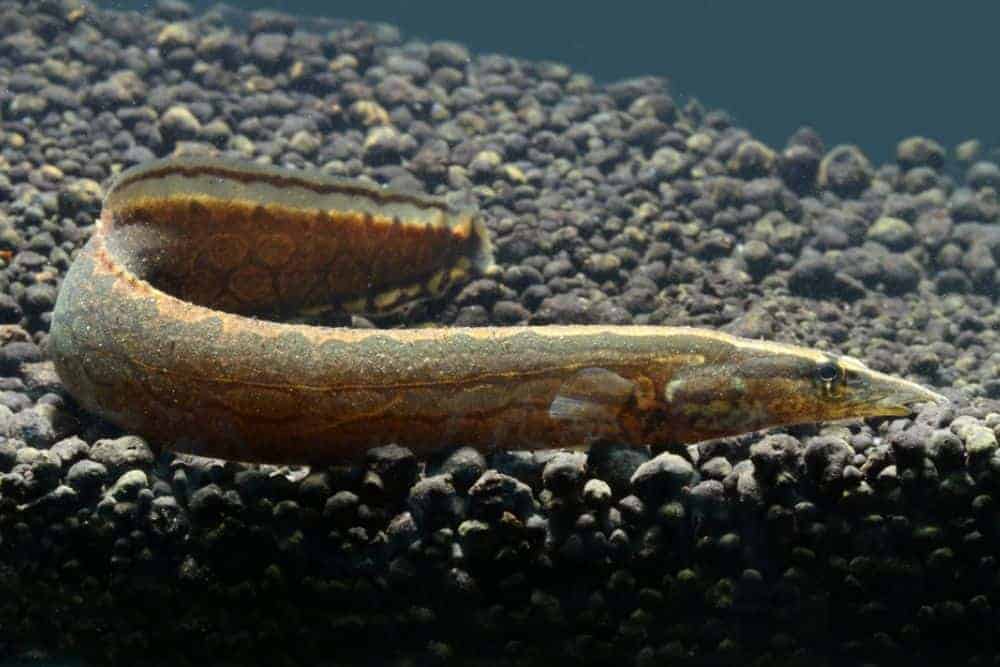
The distinguishing features of this species are the alternate light and dark horizontal bands along the side of the body and the false eye-spots on the dorsal fin. As with other spiny eels, there are a number of spines in front of the dorsal fin itself. Nocturnal by nature, and eager burrowers into the aquarium substrate, Lesser Spiny Eels do not rank among the most conspicuous of aquarium occupants. They will hunt for food on the floor of the tank, so provide them with foods that sink to the bottom. Spiny eels tend not to agree with one another when kept in small groups.
Mudskipper
- ORIGINS East Africa, south to Madagascar, and east to parts of southeast Asia and Australia.
- SIZE 6 in (15 cm).
- DIET Live foods of all types.
- WATER Temperature 77–86°F (25–30°C); alkaline (pH 7.6–8.0) with SG 1.002–1.007.
- TEMPERAMENT Territorial.
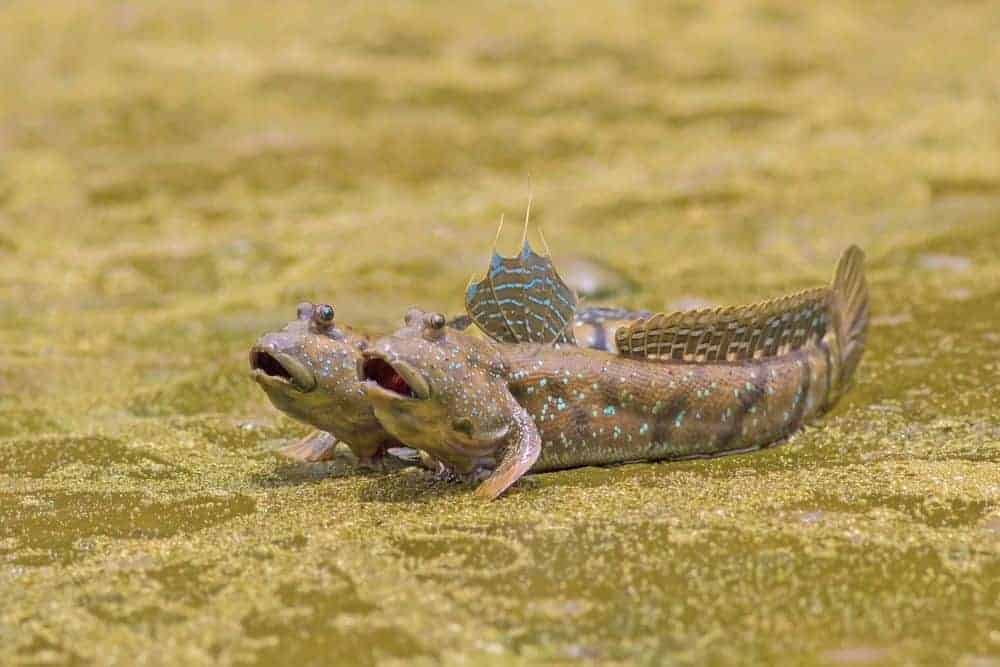
An aquarium for these fish needs to be relatively large and have a raised area like a beach at one end to allow the fish to hop onto land, just as they would at low tide in the wild. Tree roots and plants, too, will be needed, and an external power filter is essential to maintain the water quality. Keeping the aquarium covered will help to ensure that the air inside is warm and humid when the mudskippers emerge from the water.
Tiger Scat
- ORIGINS Indo-Pacific region, from the coasts of India extending eastward to the Pacific islands.
- SIZE 12 in (30 cm).
- DIET Largely vegetarian.
- WATER Temperature 77–79°F (25–26°C); alkaline (pH 7.6–8.0) with SG 1.002–1.007.
- TEMPERAMENT Social and non-aggressive.
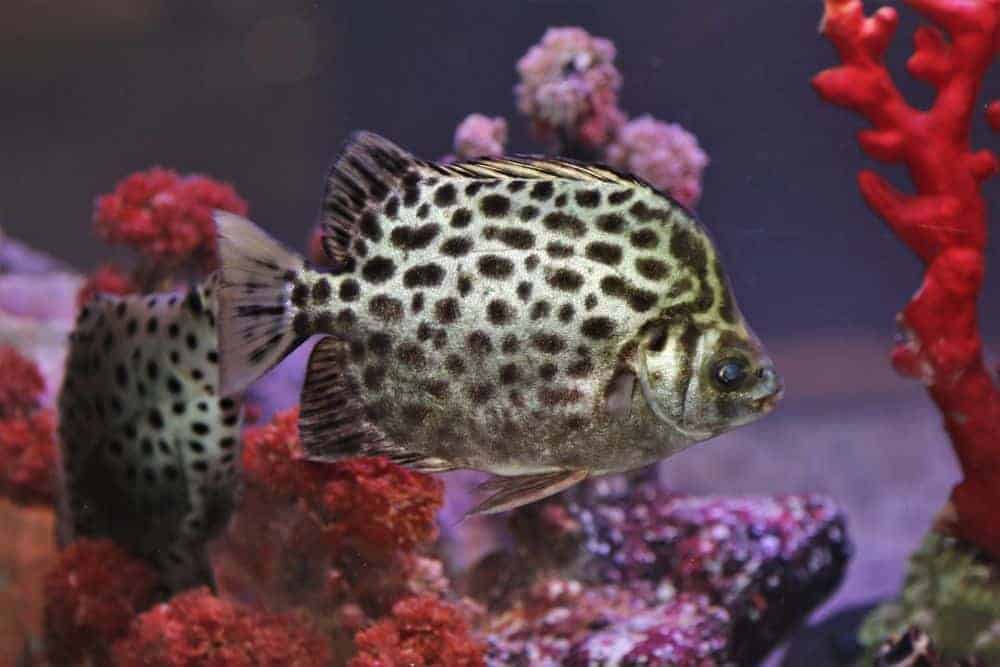
The spotted patterning that characterizes young Scats alters as they mature, with the background color becoming silvery rather than golden. Being vegetarian, these brackish fish species will damage or destroy living plants in their aquarium. Java Fern (Microsorum pteropus) must not be incorporated, since it may be toxic to Scats if they eat it. Scats are active fish by nature, and a group will require a large, spacious aquarium.
Bumblebee Goby
- ORIGINS Southeast Asia, in brackish waters close to the shoreline.
- SIZE 2 in (5 cm).
- DIET Small live foods preferred.
- WATER Temperature 77–79°F (25–26°C); alkaline (pH 7.6–8.0) with SG 1.002–1.007.
- TEMPERAMENT Territorial by nature.
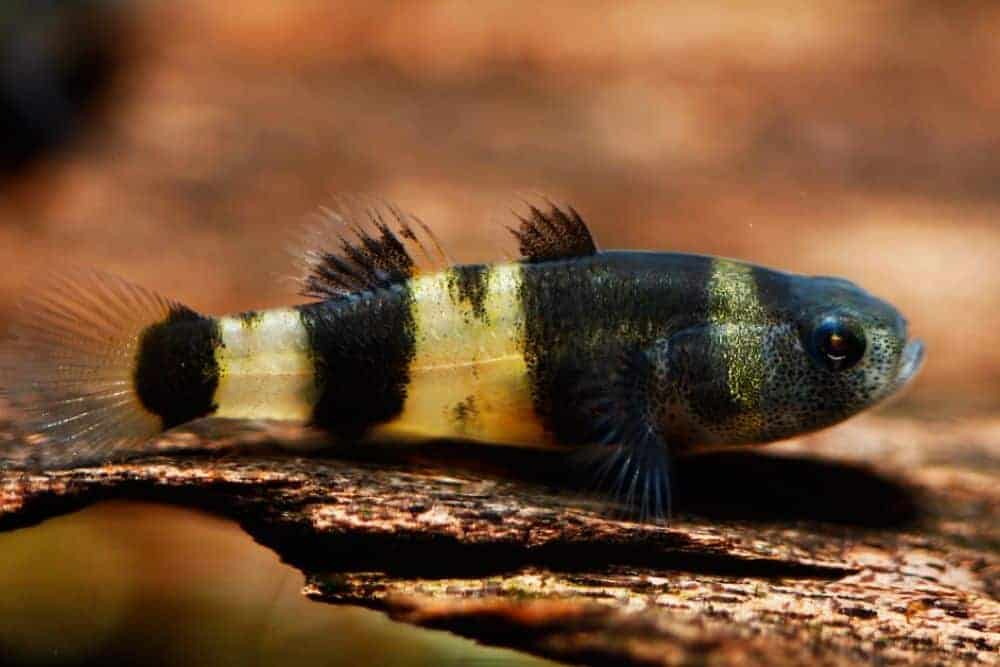
The yellowish-orange and black banding on these small gobies resemble that of a bumblebee. Males tend to be more brightly colored and thinner than females. Bumblebee Gobies spend their time close to the bottom of the tank. Their eggs, which are susceptible to fungus even in brackish water, are hidden under a rock and guarded by the male until they hatch about four days later. Provide retreats to lessen displays of territorial aggression.

Hi, my name is Sean, and I’m the primary writer on the site. I’m blogging mostly about freshwater and saltwater aquariums, fish, invertebrates, and plants. I’m experienced in the fishkeeping hobby for many years. Over the years I have kept many tanks, and have recently begun getting more serious in wanting to become a professional aquarist. All my knowledge comes from experience and reading forums and a lot of informative sites. In pursuit of becoming a professional, I also want to inspire as many people as I can to pick up this hobby and keep the public interest growing.
Read more about Sean.
Please join also my Facebook group.

